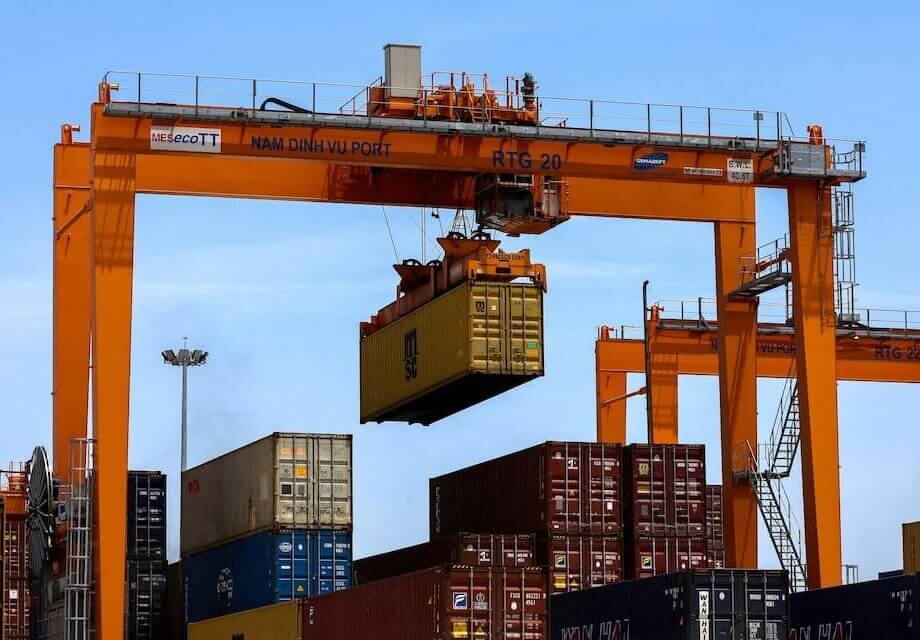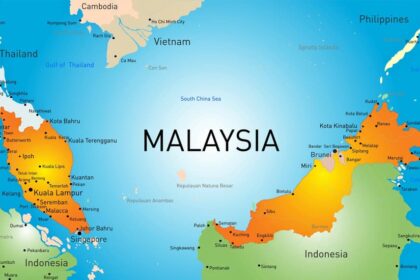Vietnam’s Trade Surplus Hits New Highs in First Half of 2025
Vietnam’s economy has demonstrated remarkable resilience and dynamism in the first half of 2025, achieving a trade surplus of $7.63 billion amid global economic volatility, shifting trade policies, and intensifying competition. Official data from the General Statistics Office (GSO) and multiple international sources confirm that total merchandise trade turnover reached $432.03 billion, marking a 16.1% increase compared to the same period last year. This robust performance is underpinned by surging exports, strong manufacturing growth, and the country’s strategic use of free trade agreements (FTAs).
- Vietnam’s Trade Surplus Hits New Highs in First Half of 2025
- What Drove Vietnam’s Trade Performance in Early 2025?
- How Did Global Trade Tensions and US Tariffs Affect Vietnam?
- Which Sectors and Products Led Vietnam’s Export Growth?
- Who Are Vietnam’s Main Trading Partners?
- How Are Free Trade Agreements and Policy Reforms Shaping Vietnam’s Trade?
- What Are the Risks and Challenges Ahead?
- How Does Vietnam’s Trade Performance Impact Its Economic Growth?
- What’s Next for Vietnam’s Trade and Economic Policy?
- In Summary
Despite facing rising logistics costs, stricter import standards, and external uncertainties—most notably new US tariffs—Vietnam’s export sector has continued to expand, reinforcing its status as a key player in global supply chains and a leading manufacturing hub in Southeast Asia.
What Drove Vietnam’s Trade Performance in Early 2025?
Vietnam’s export earnings in the first six months of 2025 reached $219.83 billion, up 14.4% year-on-year. Imports also grew strongly, totaling $212.2 billion, a 17.9% increase. The resulting trade surplus of $7.63 billion, while slightly lower than some earlier forecasts, reflects the country’s ability to maintain a positive trade balance even as import demand for production inputs remains high.
Processed industrial goods were the dominant export category, generating $194.28 billion—an impressive 88.4% of total export turnover. This includes electronics, textiles, footwear, and machinery, all of which have benefited from Vietnam’s integration into global value chains and its attractiveness to foreign direct investment (FDI).
Meanwhile, agricultural, forestry, and fishery products, though accounting for a smaller share, continued to play a vital role. Exports of these goods grew by 15.5%, with notable increases in coffee, seafood, and timber products. According to the Ministry of Agriculture and Environment, agricultural exports alone reached $8.5 billion (up 17.8%), forestry products $8.82 billion (up 9.3%), and fishery products $5.16 billion (up 16.9%).
On the import side, 93.7% of goods brought into Vietnam were inputs for production—such as raw materials, machinery, and components—highlighting the country’s ongoing industrialization and export-oriented growth model.
How Did Global Trade Tensions and US Tariffs Affect Vietnam?
One of the most significant external factors shaping Vietnam’s trade landscape in 2025 has been the evolving trade relationship with the United States. In April, US President Donald Trump threatened to impose tariffs as high as 46% on Vietnamese exports, raising concerns about the future of Vietnam’s largest export market. However, after negotiations, the two countries agreed to a lower 20% tariff on many Vietnamese goods, with a 40% tariff specifically targeting goods transshipped through Vietnam to circumvent US trade barriers on other countries, particularly China.
This outcome, while less severe than initially feared, still represents a substantial increase from previous tariff rates and introduces new uncertainties for Vietnamese exporters. Nevertheless, the trade deal also included provisions for Vietnam to import US products at zero percent tariffs, potentially opening new avenues for bilateral trade.
Despite these headwinds, Vietnam’s exports to the US remained robust, reaching $70.91 billion in the first half of the year—a 17% increase year-on-year. The US continues to be Vietnam’s largest export market, and the trade surplus with the US expanded to $62 billion, up 29.1% from the previous year.
Which Sectors and Products Led Vietnam’s Export Growth?
Vietnam’s export success in 2025 has been broad-based, with 28 export items each recording a value exceeding $1 billion, and nine items surpassing the $5 billion mark. The foreign-invested sector, including major multinational manufacturers like Samsung and Foxconn, accounted for 73.5% of total export turnover, underscoring the importance of FDI in driving export growth.
Key export categories include:
- Electronics and Electronic Components: Computers, phones, and related components remain the top export earners, reflecting Vietnam’s role as a global electronics manufacturing hub.
- Textiles and Garments: Textile exports hit $3.84 billion in May alone, the highest monthly value ever recorded for that month. The US is the largest importer of Vietnamese textiles, accounting for $6.97 billion in the first half of the year.
- Footwear and Leather Products: These continue to be major contributors, benefiting from diversified market access and competitive production costs.
- Agricultural Products: Coffee exports stood out, reaching $5.5 billion in the first half—more than double the same period last year and surpassing the full-year total for 2024.
- Seafood and Timber: Both sectors saw double-digit growth, supported by improved supply chains and rising global demand.
Processed industrial goods, in particular, have been the engine of export growth, accounting for nearly 90% of total export value. This reflects Vietnam’s successful transition from low-value, labor-intensive exports to higher-value, technology-driven manufacturing.
Who Are Vietnam’s Main Trading Partners?
Vietnam’s trade relationships are both diverse and strategically important. The United States remains the largest export destination, followed by the European Union and Japan. Trade surpluses with these partners have expanded significantly in 2025:
- United States: $70.91 billion in exports, $62 billion trade surplus.
- European Union: $19 billion trade surplus, up 11.6% year-on-year.
- Japan: $1.2 billion trade surplus, up 69.1%.
Conversely, Vietnam continues to run trade deficits with several major partners:
- China: $55.6 billion deficit, up 42.2%.
- South Korea: $14.6 billion deficit.
- ASEAN: $7.5 billion deficit, up 67.4%.
China remains Vietnam’s largest source of imports, particularly for raw materials and components essential to its manufacturing sector. This dependency underscores the interconnectedness of regional supply chains and the challenges Vietnam faces in balancing its trade relationships.
How Are Free Trade Agreements and Policy Reforms Shaping Vietnam’s Trade?
Vietnam’s ability to sustain export growth amid global headwinds is closely linked to its proactive trade policy. The country has signed 17 free trade agreements covering over 60 countries and territories, providing preferential market access and reducing tariff barriers for Vietnamese goods. These agreements have enabled Vietnamese enterprises to diversify export markets, reduce reliance on any single partner, and enhance competitiveness.
The Ministry of Industry and Trade has urged businesses to fully leverage these FTAs, diversify markets, and focus on improving product quality and added value. Trade promotion activities are being intensified, with a focus on professionalism and adaptability to evolving global conditions. The government is also finalizing mechanisms to support sustainable agricultural supply chains, improve competitiveness, and enhance the international reputation of Vietnamese goods.
Nguyễn Thị Hương, Director General of the General Statistics Office, emphasized the importance of removing trade barriers and facilitating the consumption of agricultural, fishery, and forestry products, especially as export standards become more rigorous worldwide.
What Are the Risks and Challenges Ahead?
Despite the positive momentum, Vietnam’s trade outlook is not without risks. External factors such as global price volatility, shifting trade policies in major economies, and geopolitical tensions could impact demand for Vietnamese goods. The new US tariffs, while less severe than initially threatened, still pose challenges for exporters, particularly those in low-margin sectors.
Vietnam’s heavy reliance on imported inputs from China and other countries also exposes it to supply chain disruptions and price fluctuations. The government has responded by encouraging businesses to adopt advanced technologies, improve supply chain sustainability, and seek new sources of raw materials.
Domestically, the government is working to help businesses access capital, adopt advanced technologies, and protect exporters’ interests. Anti-smuggling operations have been intensified, with customs authorities uncovering thousands of cases of trade fraud, misdeclaration, and illegal cross-border transport of goods. These efforts are crucial for maintaining the integrity of Vietnam’s trade system and ensuring compliance with international standards.
How Does Vietnam’s Trade Performance Impact Its Economic Growth?
The strong trade performance in the first half of 2025 has been a key driver of Vietnam’s broader economic growth. Gross domestic product (GDP) expanded by 7.52% in the first six months—the highest first-half growth rate in more than a decade. In the second quarter alone, GDP grew by 7.96% year-on-year, approaching the government’s ambitious full-year target of at least 8%.
The manufacturing sector was particularly dynamic, surging by 10.1% in the first half. This growth has been fueled by both domestic and foreign investment, with pledged FDI jumping 32.6% year-on-year and disbursed FDI rising 8.1%. The government’s focus on industrial upgrading and shifting exports toward higher value-added products, such as semiconductors, is expected to further strengthen Vietnam’s economic foundation.
Dominic Scriven, founder and chairman of investment firm Dragon Capital, commented on the recent trade developments:
“With external trade risk now moderating, attention can return to the country’s core growth engine, the domestic and private sector economy.”
Fitch Solutions, a global research firm, also noted that Vietnam’s exports and investment will remain strong for the rest of the year, signaling upside risks for its 2025 GDP growth forecast of 6.4%.
What’s Next for Vietnam’s Trade and Economic Policy?
Looking ahead, Vietnam has set a 2025 export growth target of 12%, aiming for about $450 billion in export turnover. Achieving this goal will require sustaining the current growth pace, further diversifying export markets, and continuing to upgrade the quality and value of Vietnamese products.
The Ministry of Industry and Trade is focusing on timely market information dissemination, enabling businesses to adapt production plans and seek new orders. Regular updates on global market developments, foreign regulations, and standards are being provided to help exporters navigate an increasingly complex international environment.
Efforts to diversify export markets are being ramped up, targeting both new and traditional destinations. The government is also working to maximize the benefits of existing trade agreements, issue warnings on high-risk goods vulnerable to origin fraud, and dispatch inspection teams when necessary. Trade promotion activities will be intensified, with a focus on professionalism and adaptability to evolving global conditions.
In Summary
- Vietnam achieved a trade surplus of $7.63 billion in the first half of 2025, with total trade turnover reaching $432.03 billion (up 16.1% year-on-year).
- Exports grew by 14.4% to $219.83 billion, led by processed industrial goods, electronics, textiles, and agricultural products.
- The US remains Vietnam’s largest export market, with a $62 billion trade surplus, despite new tariffs imposed in 2025.
- Vietnam continues to run trade deficits with China, South Korea, and ASEAN, reflecting its reliance on imported production inputs.
- Free trade agreements and proactive government policies have been crucial in sustaining export growth and diversifying markets.
- Risks remain from global trade tensions, supply chain dependencies, and stricter import standards, but Vietnam’s economic outlook remains positive.
- The government is targeting 12% export growth for 2025, focusing on market diversification, product quality, and supply chain sustainability.












